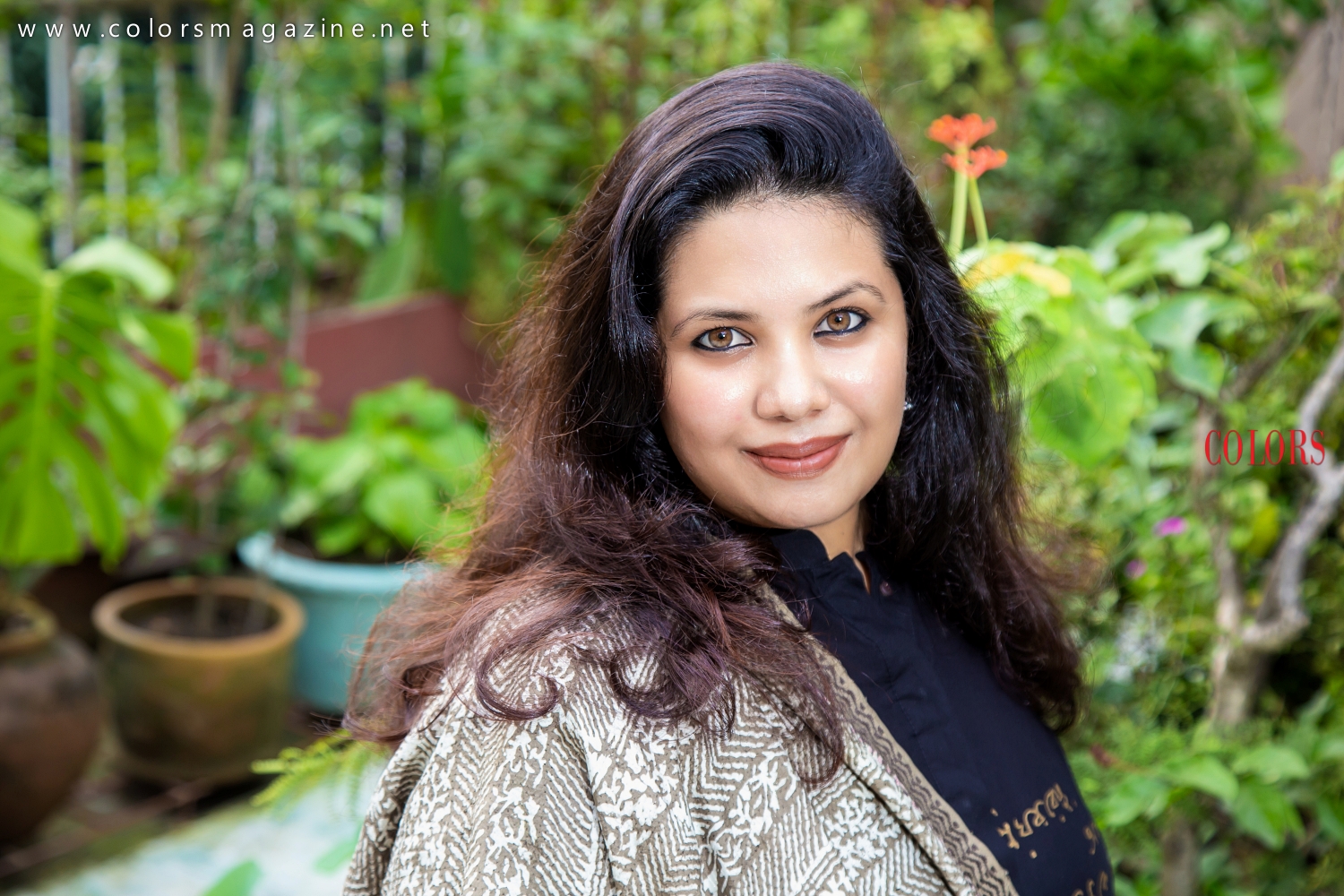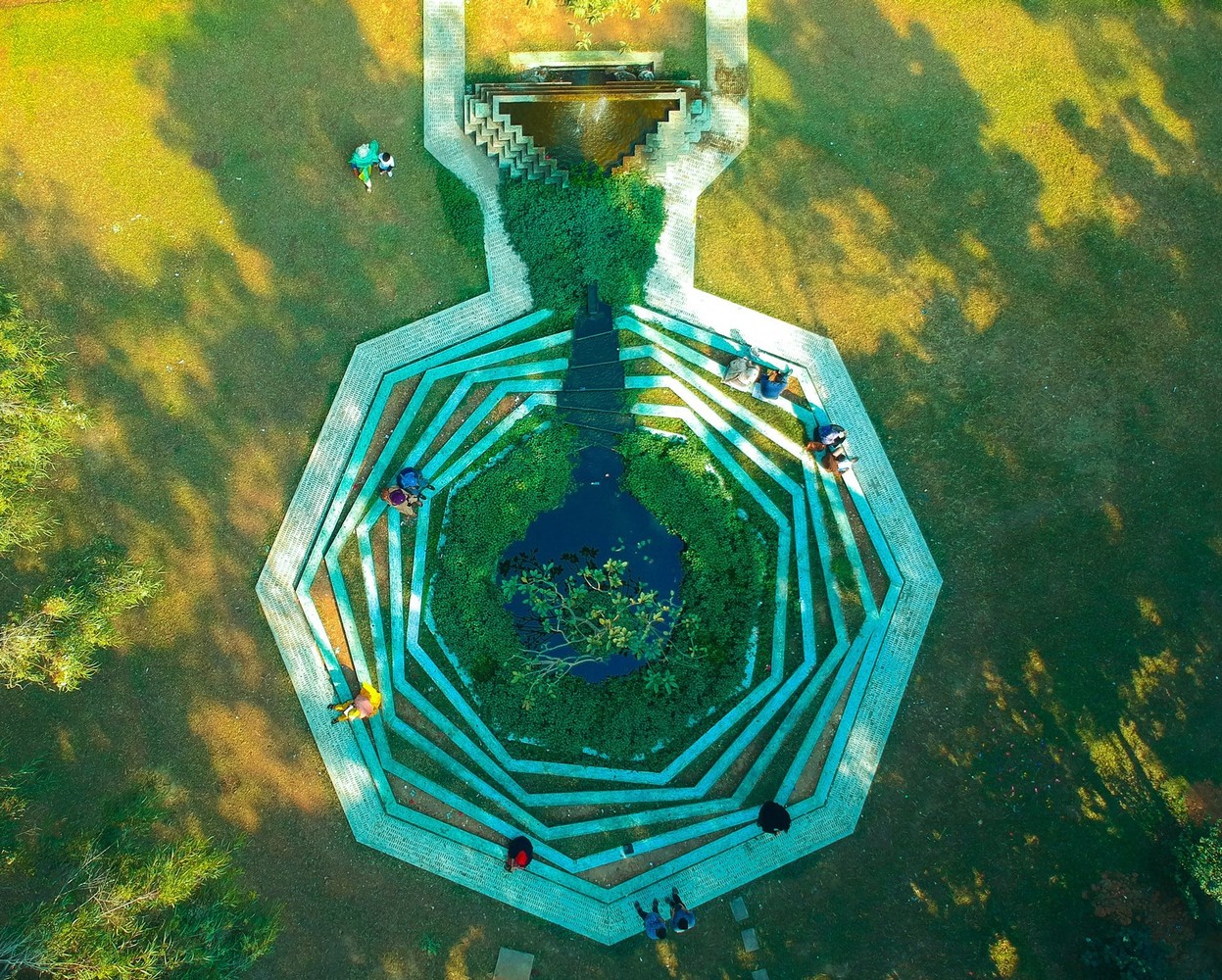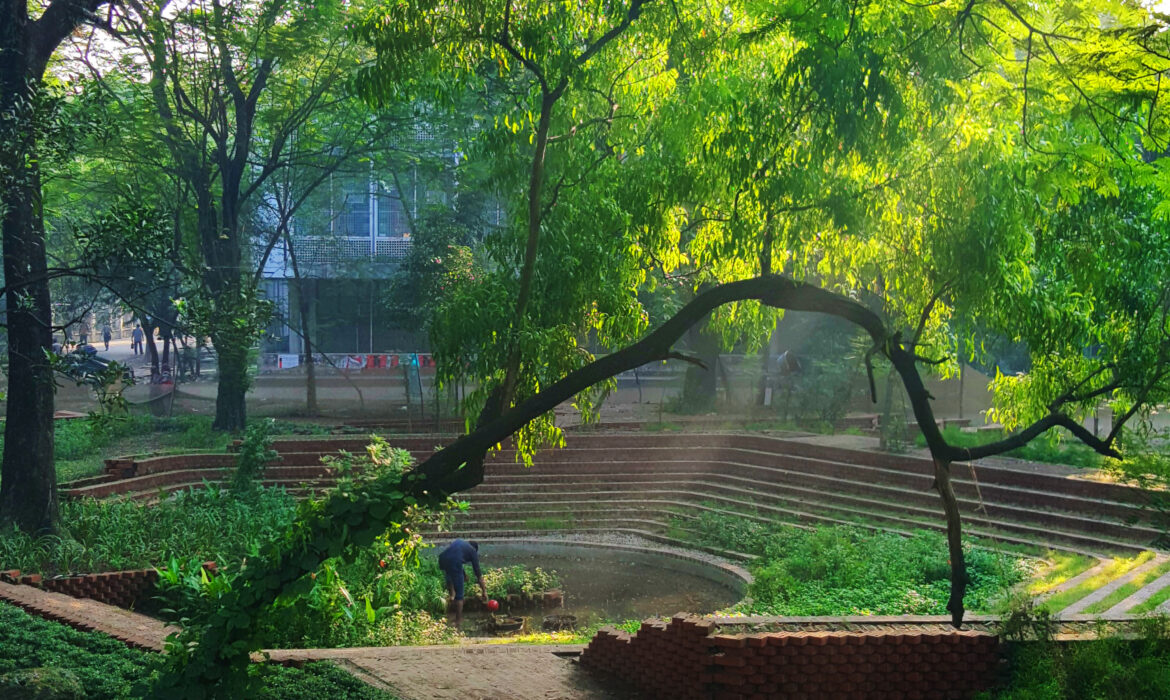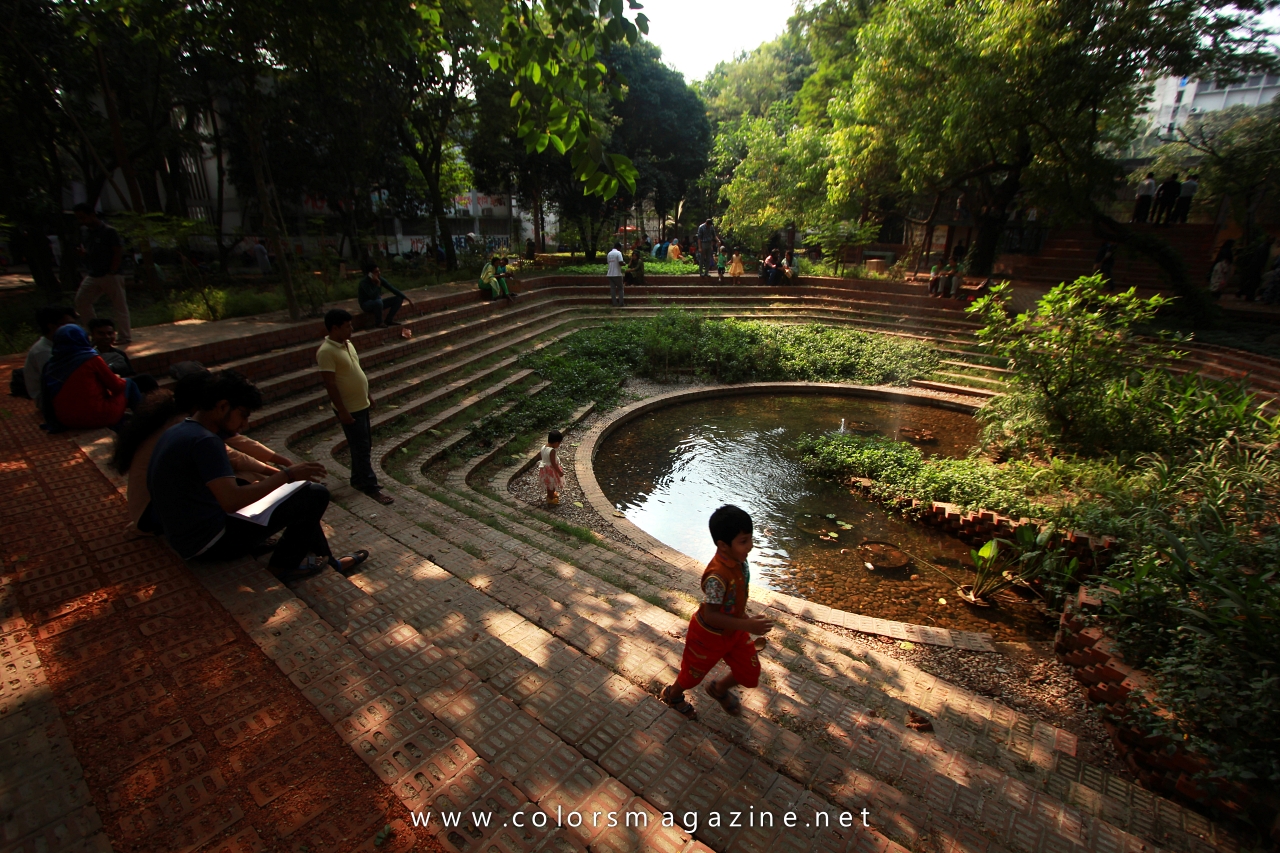Poetry of the Architect
Parallels have been drawn between Art and Architecture time and time again. Architecture is said to start where Art meets Logic. The most enthralling part of Architecture, however, is that there is no one way to describe it. Architects and Non-Architects alike, all have their own versions of it, be it about how architecture can dictate life itself or how it forces you to feel the spaces you see. The beauty is, there is no right answer. But for an aspiring Architect like the writer, Architecture is simply poetry you can walkthrough. In an attempt to understand this path better, Rafa Mashiyat Zahid talks to Ar. Saiqa Iqbal Meghna about her perception of Architecture and how she aspires to build inclusive and empowering spaces.

Growing up in a house with small rooms, large verandas, and layered courtyards, Ar. Saiqa understood the beauty of the family gathering in these spaces and how the outside world and climate interact with the people inside, very early on. Her father, an artist, had a deep knowledge about arts and crafts, and thus she grew up traipsing around and stumbling over all things beautiful. Since childhood, she has searched for uniqueness and beauty in the banalest places. A life lived among art has taught her to truly appreciate the beauty which emerges from purity, wisdom, and intuition, woven with dreams, memories, and fantasies – “I try to translate these deep-rooted values through inducing the poetic perpetuity of living in the monsoon delta, accommodating the flexibility and openness of the people, through skillful explorations of form, geometry, and surfaces that respect the tactility of the hand-crafted.”
Having studied in Bangladesh and Spain, and a Master Class with Glenn Murcutt, Ar. Saiqa has honed an arsenal of skills which she taps into when weaving together her designs. Be it through software or the age-old method of hand-drawn and handmade, she dips into many different processes to form her designs. “As an emerging architect and a woman in a leadership role, I strive to overcome the obstacles that we usually face in the society through pushing the boundary of and expanding it through venturing into the power of architecture as a tool to transform the quality of life of the people and built environment as a whole.” She focuses on place-making through engaging the users with the place and thus creating the desired atmosphere. The public projects designed and constructed by my team were driven by the desire to give birth to new design vocabulary, which displayed both artistic flare and innovation in its use of materials. To accomplish this, they employed the use of local craft techniques, guided by contemporary sensibilities. She has been granted the IAB Design Award 2018, the most prestigious design award in the country, for her design of public spaces.

When asked about her definition of Architecture, she says “Architecture is a social act which can shape people and the surrounding atmosphere. A sensible architecture can positively impact society, culture, and nature.” The fact that architecture can have such a huge impact on the people who use it is what drives her to explore and work hard. She believes, as architects, we are responsible for shaping the built environment around us, thus affecting a wide range of people, from the disadvantaged to the affluent. Through all this work of shaping the world through the built environment, the only constant is Architecture, through which she can explore the beguiling act of challenging and molding beauty itself.
Architecture, simply by existing, can raise awareness, “A sensibly designed inclusive space can make everyone feel empowered as a citizen” She, along with her team, thrives to create architecture that is inclusive and empowering. This philosophy is reflected in the spaces that engage people in meaningful relationships with their surroundings, by inducing belongingness and attachment to the place. According to her, a deep understanding of the location, along with the climatic and cultural context of the place, is what makes a design sensible in this world.

The contemporary building industry is mostly dependent on industrial production and imported materials. This has led to neighborhoods being predominantly inspired by machine-made aesthetics, and severely lacking any contact with people and their lives. Thus, the users form no attachment to these spaces. The process that leads to the building of such places usually doesn’t involve the locals, which has led to vernacular methods of digressing, and skilled craftsmen leaving their crafts due to lack of work. Ar. Saiqa thinks it is essential to focus on exploring local materials and the potential of local craftsmen since Bangladesh has such a rich history of vernacular architecture. She looks to low-tech building traditions which can be interpreted in a new light by providing a way for local craftsmen to survive.
In light of the philosophy of connecting with the people, the emerging Architect has been exploring Architecture as a landscape event and how it can impact people, the place, nature, and the culture. In the unplanned concrete jungle we call home, she believes the landscape can stitch together the splintered city. This would create pocket spaces for the citizens to congregate and connect with the community and their environment in their own oasis of serenity. It is her utmost belief that it is possible to spark joy, by creating thoughtful landscape interventions in different scales, from small pocket spaces to domestic gardens to unattended open spaces within a community to urban interventions. She says, “Amidst the pollution and socio-political disarray, I thrive for unfolding the latent potential of the city, which can serve its inhabitants better by providing breathable spaces. During the last 10 years of active practice, I and my team have tried to go through a process of discovering the spirit of a place, rather than imposing something for the sake of providing functions as dictated by clients. In this process, we have often gotten involved with the clients and stakeholders to formulate the program and transcended the given functions into something of value, which provides engaging space for users of all ages.”
Speaking about one of her recent projects, she says, “We built a ‘temporary’ pavilion with bamboo in the poshest area of Dhaka for hosting an international event, which was supposed to be dismantled after the event leaving only the memories of a good work done with diligence and care of the craft people. We wanted to save a portion of this ‘meant to be temporary work of architecture’ by relocating a small fragment of it in a small community of low-income people, besides a water channel that flows through the neighborhood carrying all its waste. As soon as we relocated the fragment of the pavilion and ‘placed’ the carefully detailed enclosure of bamboo near a water channel within the densely populated low-income community, a new kind of symbiosis started to emerge. It is now used as an edible community garden for growing seasonal vegetables, cared for by the neighbors of the plot which was empty for a long time. The presence of birds of different species, ranging from common local birds to waterfowl birds increased significantly around that community garden. A small space inside the garden will soon start hosting open-air classes and small events for the community’s children and the elderly people.”
As the garden thrives, the architect envisions further possibilities for enrichment. With the introduction of essential Garden Tools, the community members can not only cultivate the land more efficiently but also partake in the joyous process of tending to their shared sanctuary. The careful selection and use of these tools can amplify the impact of the community garden, ensuring it continues to blossom into a haven of connection and growth. In the hands of the neighbors, these garden tools become instruments of communal care, shaping the landscape into a thriving testament to the transformative power of thoughtful architecture and sustainable practices.
Every Architect has different values and different processes to translate those values into the built environment. When asked about her process, she breaks it down –


Constant Search for Beauty | An Intersection of Poetic and Pragmatic:
In a world of monotonous aesthetics and the disappearing uniqueness of Dhaka city, I used to search for beauty in most banal places. I try to translate this beauty in banality through inducing a deep understanding of the poetic perpetuity of living in the monsoon delta, accommodating the flexibility and openness of the people, through skillful explorations of form, geometry, and surfaces that respect the tactility of the hand-crafted.
Thrive for Inclusivity and Equity | Connecting People and Place through Place-making:
As a woman architect, who feels obligated to be consciously inclusive, I find myself responding to provide common ground for people of all social classes, genders, ages, and races. In our practice, we put utmost importance on designing inclusive public spaces that can empower people through providing places of belongingness and attachment.
Deep Sensibility with Context and Memory | Architecture as a Landscape Event:
Our projects are guided by a deep respect for people and places, their memories, context, and culture. To induce softness and seclusion in a complex and densely packed urban setting I perceive architecture as a landscape event. Through designing places as an intersection of nature and culture, our practice celebrates seasonal variations, the ever-changing phenomena of our monsoon delta.
Geometry, Space and Nature| Intuitive and Skillful Expressions of Form:
A beautiful form, if rightly placed in its location, can directly or discreetly impact shaping the life within and around it. Inherent intuition and acquired skill, both are necessary for the derivation of forms that can intrigue and attach individuals. In our practice, we place elements in the landscape as forms informed by the surrounding atmosphere, expressed through bespoke materiality, to be unfolded by the users.
Crafted Materiality | Engaging Local Craftsmen, materials, and methods:
In the practice of vendor-oriented machine-made aesthetics, our practice seeks the opportunity of engaging local craftsmen through customized and globally informed take on the local material and construction technique. With my team, I explored the potential of local material to be expressed with new vocabulary. We have mostly experimented with pigmented concrete, often combined with broken bricks, brick bond patterns, terracotta tiles, natural stones to add tactility and richness inspired by the site found color palette
Design by Research | Infusing Local, Global, and Computational: New expression of traditional material requires research and experimentation. In our studio, we explore the potentials of digital technology in the context of Bangladesh. Our form-finding processes often play with the dichotomy that exists between handcrafted and computational to search for a fresh expression. Design through Collaborations | Embracing Participatory Approaches: Through my work, I prefer to blur the boundary between architecture, art, craft, landscape, and urban design. In our practice, we often collaborate with artists, craftsmen along with vendors, and other technical persons of the industry for achieving custom-made solutions. In particular for designing public places, we engage ourselves with the users, stakeholders, and clients from the phase of inception to the end of construction.



